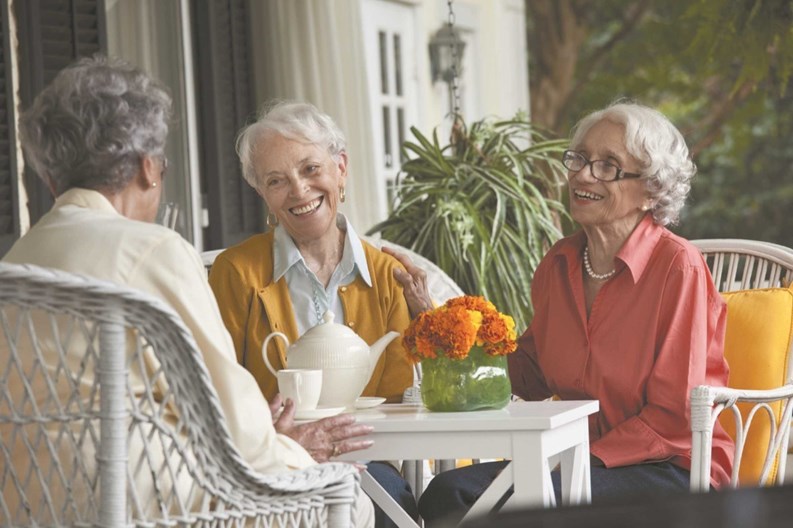Citizens over the age of 65 comprise nearly 13 percent of the U.S. population—just under 40 million seniors. By 2030, it is estimated that 72 million Americans will be over the age of 65, nearly doubling those numbers. Where this volume of seniors will live and how, is a question facing not only the individual seniors but also many boards and property managers who are seeing an increased population of older residents. It is to be expected that this group will dramatically change the face of aging and retirement.
Not a New Trend
The estimates are not surprising as “baby boomers,” which are children born post-World War II between the years of 1946-1964, move into retirement, and beyond. By sheer force of numbers, this group has influenced everything from Gerber baby food to Schwinn bicycles to mini-vans. The first boomers reached retirement age (65) in January of this year. It is to be expected that this group will dramatically change the face of aging and retirement. According to data released in 2010 in the U.S Census Bureau, 993,158 of New York State residents are over the age of 65.
Some of these aging Americans move into nursing homes or managed care facilities as their mobility and overall health begin to decline, but as people are living longer and healthier lives, they’re opting to stay in their homes longer—a process sometimes referred to as ‘Aging in Place.’ A 2010 AARP [American Association of Retired Persons] found that 90 percent of seniors want to remain in their homes.
It is generally agreed that aging in place, surrounded by community in a familiar environment is far preferable to moving into a less-stimulating, potentially more isolating nursing facility. The term ‘Naturally Occurring Retirement Communities,’ evolved from aging in place. A NORC is a demographic term used to describe a community, building, development that was not originally built for seniors, but that now has a sizable elderly population.
“The aging population will likely lead to a rapid increase in the number of NORCs in the coming years,” says John Migliaccio, Ph.D., and director of research for the MetLife Mature Market Institute in New York City.
According to the United Jewish Appeal (UJA) of New York, a philanthropic umbrella organization serving over 100 social services agencies, there are 54 NORC programs in New York State, which receive $11 million of public funding for its 60,000 residents.
“A major priority for us is helping the elderly retain their residences and independence to age in place,” says Anita Altman, UJA’s Deputy Managing Director. “What we do is raise money. We help provide financial support. We provide government relations. We do communal planning. We want to improve the quality of life for elderly residents so they can age with dignity.”
In a NORC program, social workers, nurses, and residents work together to address the needs of seniors in a community. Wide ranging activities from yoga to indoor gardening to pizza and film evenings are provided.
Co-op City, located in the Baychester section of the Bronx is home to 55,000 residents with a senior citizen population of over 8,300, making it the largest NORC in the nation. Many of its elderly inhabitants moved in as young workers and remained after retiring.
“Here at Co-op City, we have implemented numerous senior services including the ‘Are You OK Program’ to contact older residents on a daily basis to check on their well-being,” says Helen Atkins, a board president and employed by the NORC organization at Co-op City and Riverbay. “Our CSO (Cooperator Services Office) managers and staff are also vigilant and help to identify and refer senior residents who may be in need of care or special services. We are proud to be recognized as the largest NORC community in the U.S. As our populations have aged in place, we continually make changes to accommodate them and serve their needs.”
The Start of Something Bigger
The first NORC services program in the country officially opened on November 14, 1986 at the Penn South Co-op complex in Chelsea. The 10 building, 2,800 unit complex located between Eighth and Ninth Avenues and East 23rd and 29th streets, was built in 1962 by the International Ladies Garment Workers Union (ILGWU) and underwritten by the United Housing Federation (UHF). Designed as a social experiment to provide affordable housing for moderate-income workers, many of the original residents were union members, who once walked to work in the nearby garment center and chose to stay in New York after retirement. By the early 80s, around 70 percent of the shareholders in the complex were over 60.
Right around this time, Fredda Vladeck, a geriatric social worker at St. Vincent’s Hospital in Greenwich Village began to notice a lot of older adults coming into the emergency room with preventable admissions. Many lived at Penn South in nearby Chelsea. As Vladeck began to dig deeper, she discovered that many Penn South residents were former labor organizers, most who had never married and half of those who had married, did not have children, and the result was a population without conventional familial supports.
“At that point I went to the Board of Directors at Penn South and told them what we were seeing at the hospital and asked them what they thought would be helpful,” says Vladeck. “The board suggested a nurse or social worker on site but I challenged them to think bigger. I challenged them to think about what kind of community they wanted as this community grew older. And that was the genesis of it.”
“Recognizing how successful that program was and that the demographics of Penn South were not all that unique given the way housing was developed in New York City, we set about see whether the model that was developed there could be replicated in other communities,” says Altman. “Turns out it was easily adaptable.”
Robert Weisenfeld is a New York City-based expert on NORC issues. He is an educator and a real estate expert. He recognizes the value of social support programs for anyone and especially for seniors. “Within the confines of a community, residents can support each other socially, emotionally, mentally and physically. In order for a NORC to function well everyone must be on board,” Weisenfeld explains. “The management company and the staff will be first to realize a senior is not doing well mentally or physically”. When all the necessary Supportive Service Programs (SSP) are in place there is a clear course of action outlined to obtain the proper help in all situations. A NORC SSP is designed to reduce service fragmentation and to provide an integrated community where seniors can age-in-place with comfort and security.
Grey is Great
Gail Badger-Morgan, the assistant general manager at Riverbay Corporation, Co-op City’s management company, sees many seniors aging successfully. She considers older adults a positive influence for a number of reasons. “I consider our mature shareholders as the ‘keepers of the legacy of the community,’ Badger-Morgan, “It is an honor to see and interact with seniors as they are a source of a wealth of information. They bring knowledge and a sense of comradely to intergenerational programming. In communities where parents are working, they become a safe place and safe caretakers for our children, values and mores that would otherwise be shared and learned while in their company.”
Badger-Morgan cites security as another plus, since older adults are often home during the day, they recognize normal activity and are great on crime watch committees.
Altman echoes Badger-Morgan’s positive sentiments. “Older adults bring a lot to the table,” she explains. “They bring a lot of life experience to any community in which they live. We have a wonderful inter-generational cultural arts program that we do every year. It brings seniors together with younger people in the community and it’s been a hit. Everyone loves it.”
Atkins feels managers and boards can reach out to residents by interacting and communicating with service providers who manager their care and health concerns with organizations such as the Visiting Nurse Service of New York.
“Our community relations staff is in constant communication with JASA [Jewish Association for Services for The Aged] which provides NORC services and AARP, which performs senior advocacy,” says Badger-Morgan. “A member of our relations staff will coordinate with the presidents of various organizations, building associations, and clubs that serve our mature population, to ascertain the needs of the seniors and to obtain their suggestions.”
Vladeck feels managers and boards can reach out to residents with a quick survey. “A survey with no more than 10 questions could be enormously helpful,” says Vladeck. “The questions should be about their concerns and aspirations. I mean this seriously because if we only ask them about what their needs are, we’re still doing what I call a deficits-based approach, which is only helping the neediest rather than defining the kind of community more broadly.”
Senior-Friendly Renovations
Renovating a living space to make it more senior-friendly will vary by building or housing development but special attention should be paid to handrails, ramps, increased signage and lighting or anything that presents a trip hazard.
“I’ve received a lot of feedback from older adults living in various kinds of housing developments and the most common concern they have is sturdy grab-bars in the shower stalls,” says Vladeck. “The stairs and hallways should also be well-lit and the security system or buzzer system should work well.”
“Assessments should be made from the entry to the building to the laundry facilities to the community rooms to the intercom systems,” says Badger-Morgan. “A housing company should be savvy as to what retrofits would help seniors within their units, complying with ADA [the Americans with Disabilities Act], and also being knowledgeable about the public areas in a building. For example, a grab-bar installation program is a must. Being familiar with the requirements for the installation of ramps, railings and other aids is essential to avoid confusion and the delay of installation of the retrofits.” Both Vladeck and Badger-Morgan believe that it is important to ask seniors what their wants and needs are that would make their lives easier and safer.
An increasing population of older residents benefits any community in numerous ways. Through open communication, boards and management companies can create a safe, stimulating and interactive community that not only houses but also engages older residents for many years to come.
Anne Childers is a freelance writer and a frequent contributor to The Cooperator. Editorial Assistant Christy Smith-Sloman contributed to this article.







Comments
Leave a Comment